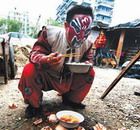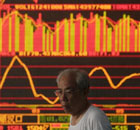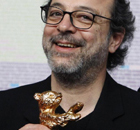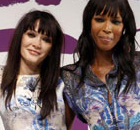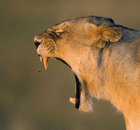Editor Choice
Tapping into men's growing interest in fashion
By Wang Xiaotian and Ding Qingfen (China Daily)
Updated: 2010-02-22 10:28
 |
Large Medium Small |
Lucrative market
Since 2008, nearly all the main fashion publication groups on the mainland have launched men's magazines in a desperate search for a slice of the lucrative action.
Bazaar Man's Style of Trends, Mr Modern from Hachette Filipacchi, L'officiel Hommes by L'officiel, HisLife, published by SEEC Media, Leon from Rayli - all came out early last year. Last October, the Chinese version of GQ, the most successful men's magazine in the Conde Nast stable, also landed in Beijing.
And they all have one aim in common - to tap into the growing interest in style and fashion among young, ambitious metropolitan men.
Last year, Trends Esquire, known for a more serious, socially and culturally concerned editorial line in comparison with its rivals, increased its fashion section from about 20 pages to more than 30.
This "big shoot" features the latest chic clothes and accessories worn by top models.
In March, 2009, the magazine invited Jia Zhangke, one of the most famous film directors in China, to direct a "big shoot" in his hometown in Shanxi province in the middle of North China.
"It was the first time a huge star like him directed fashion photography for a men's magazine," said Tian.
"Even in women's magazines it's very rare. You can imagine how much attention we paid to it."
As part of the waxing interest, four new fashion columns were commissioned to address the latest trends and advise Chinese men how to dress in a modern way. Writers wrote about the latest seasonal designs and how the elite businessmen disported themselves.
Editors recommended "best single items". An element of fun was injected with articles on how to "rescue" embarrassing sartorial faux pas.
"Fashion is now indispensable core for these magazines and a key criterion upon which to judge the publication's quality and taste," said Tian. The section also attracts the most advertising, not a small consideration in a tough, competitive market.
When Trends Esquire changed its tough "Daddy" look to become more fashionable and light, another famous man's magazine under the umbrella of Trends Group also changed tack and went for a big revamp.
For Him Magazine, based on the UK's lads' mag FHM, and the best selling one of its kind across China, moved its iconic sexy content to the back of the magazine and put more respectable material up front to attract more advertising.
"In the first half of 2008 we started to put sexy content at the back, making it more interesting, and practical upfront. That really worked. Since then our advertisement revenue has grown steadily and our clients are very satisfied," said Geng Lei, equipment editor of the magazine, who once put a Cadillac sedan next to an old ox cart in a luxury brands photographic shoot to contrast the old and the new, a perhaps crude way of signifying change.
Geng said each issue had now become more focused, building closer ties with readers. "We are their brother - and this brother shares amusing experiences," he said.
"We don't want a serious reputation. We are totally different from 'Daddy' Esquire."
According to data from the Opening Strategy Consultation, in the third quarter of 2009, For Him Magazine topped the sales list, occupying 22.09 percent of total market share, followed by Trends Esquire and Men's Health, also owned by Trends Group, which had 13 percent and 11.27 percent respectively.
While former market leaders rethink their competition strategy, newcomers from overseas are sizing up the market.
"Men's magazines in China are rather similar to women's," China Business News quoted Wang Feng, chief editor of GQ China, which was launched in October, as saying.
"The market orientation of the Chinese version of GQ is a little general and wide. We don't target a special niche market."
The magazine targets young male readers with salaries of more than 70,000 yuan ($10,248) per year. It tries to be a "cool uncle" figure to its readers while trying to stand by its original international high-end taste.






